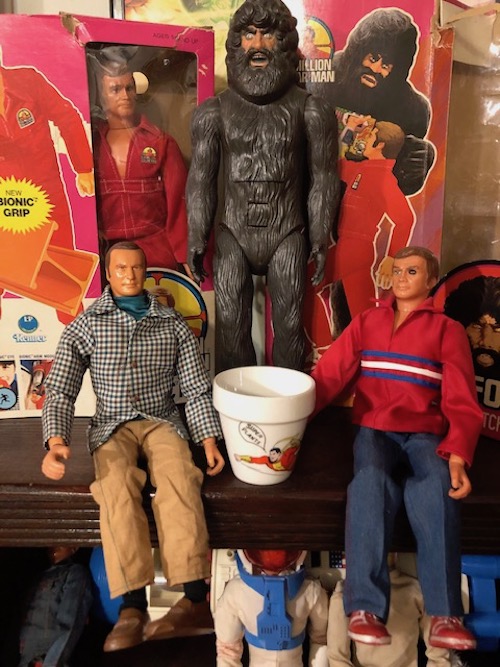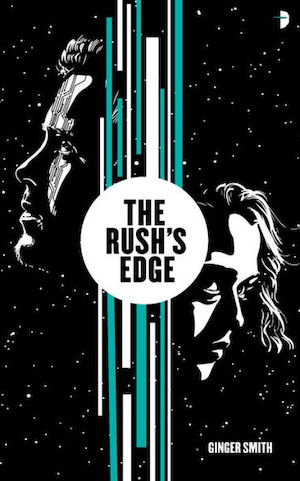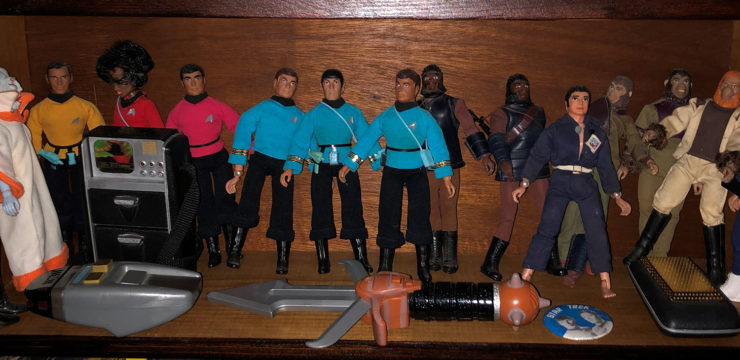I collect 1950s-1970s comics and sci-fi toys.
I have to blame my husband for my collector’s urge. At first, he went alone to comb through the old yellowed comic boxes, shoulder to shoulder with strangers silently flipping through comics in bags and backboards. I was a sci-fi fan and could quote Star Trek and Star Wars with the best of them, but had never really gotten THAT deeply into comics, or sci-fi toys for that matter.
But one day I happened to go along.
My husband was building his Silver Age and Bronze Age Green Lantern collection at the time, and there were a lot of boxes to go through, so I began to help. I quickly learned to tell the ages of comic books by cover price, then I discovered what made a book desirable and what didn’t. I became able to recognize the yellowed pages, foxing, corner bends and color breaks that would cause a book to be downgraded. While I thumbed through boxes and boxes of comic books, I casually listened in while my husband chatted with the dealers. They would share stories of epic books found in garage sales and the elusive “holy grail” books found in the most interesting of places, as well as stories of the ones that got away. I began to see the attraction of the eternal hunt so I started to read the articles in the Overstreet’s price guides. Sometimes, I would even surprise my husband with little bits of comic trivia that I’d learned.
Comic shows then led me to sci-fi toys. There are plenty of categories to collect: Star Trek and Planet of the Apes Megos, Battlestar Galactica action figures, comic book related toys and the obligatory scattering of Star Wars vehicles. We visited toycons all over the southeastern United States. I really began to get into it when we started our Six Million Dollar Man collection. I had loved the series as a kid in the 70s. When we found our first Oscar Goldman figure (Steve Austin’s boss), he had nothing but a pair of pants. We slowly built his outfit, con by con. At a convention in Atlanta, we found his distinctive green/brown houndstooth jacket in a bag of vintage G.I. Joe clothes. Later, we found a shoe in the bottom of a Ziploc bag of tiny guns and Matchbox cars. A guy somewhere else had his shirt and socks as a package deal, and they were by far the hardest to find and priced accordingly. But we bought them anyway. Slowly, bit by bit, Oscar was complete once more.

So, to get to the point of it all, I believe the lessons of collecting can be applied to lessons for writing. Writers need to listen and observe, in order to see what’s working in a story and where the “foxing” and “corner bends” are. It’s a kind of gut feeling that is hard to explain to a non-writer. When the story is right, it’s right, like finding the last Green Lantern comic in a run. But when something’s wrong, a writer will know it deep in their bones. It’s like seeing Steve Austin wearing Maskatron’s black shoes when he should be wearing his red sneakers. At those times, it’s best for a writer to back up to where the story felt right and go in a new direction from there.
And just like my Oscar Goldman, stories usually appear in a bare state. I often start with an idea, maybe even only one scene in mind, but bit by bit I find the pieces, and put the story together to create a whole. Like collecting, it takes time to find those missing parts. The Rush’s Edge began with an attempted kidnapping and a bar fight. At the time, I had no idea where that one scene was going to take me, until I dug a little deeper and found the pieces I needed.
Character backstory was one of those pieces. Just like an old toy, each character in a work has been through things, and those events etch themselves on a character’s soul. They impact how the world sees the character and how the character views the world. Knowing what has made a character who they are is essential if I plan to write their struggles and their triumphs. In my book, Vivi Valjean started out as the ship’s tecker, but I soon realized I had to know more about the fresh-faced ex-college student who ended up on a barstool in a dive on Omicron Station. Her story grew out of that need to know. Likewise, the bonds of brotherhood between Hal and Ty don’t matter much unless given context by their backstory.
The last and maybe one of the most important lessons collecting has taught me is to have grit. Just like collecting toys or comics or anything, you have to be patient and willing to put in the effort. I would never give anyone any of those stupid writer’s tips that never work, but I have found this one thing to be true. The only way to get those pages written… is to sit down and write those pages. I write each day. It’s become such a part of me that I feel incomplete if I don’t. And just like collecting, writing will take time… a great deal of time. It took time to find our Bigfoot in the box, and it takes time to work through writing something as lengthy as a novel. You have to have grit to see it through.
And whether it’s finding the final piece of an action figure’s outfit or pulling all the elements together for a novel, seeing it complete is the best feeling in the world.
Originally published October 2020.
Buy the Book


Rush’s Edge
Ginger Smith has worked as a record store employee, freelance writer, bookstore assistant manager and high school teacher of English. In the past, she has played in many tabletop RPG groups and even run several of her own. She collects vintage toys, sci-fi novels and comic books, as well as mid-century furniture. She currently lives in the southern USA with her husband and two cats, spending her free time writing and watching classic film noir and sci-fi movies.










